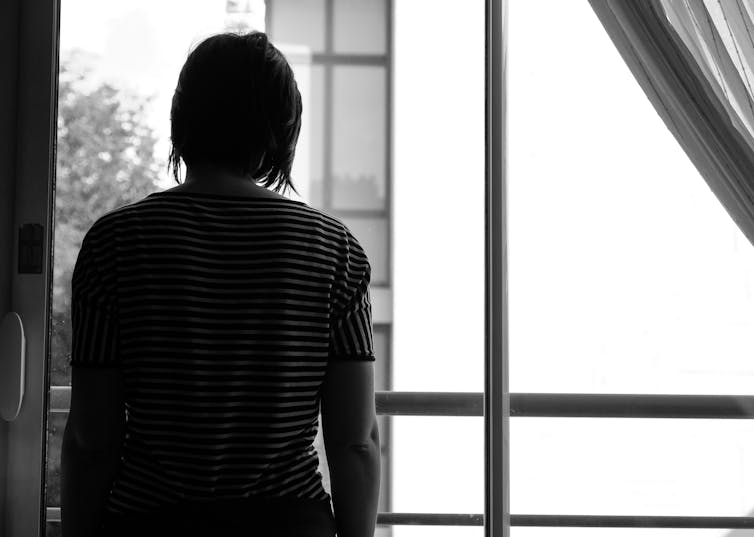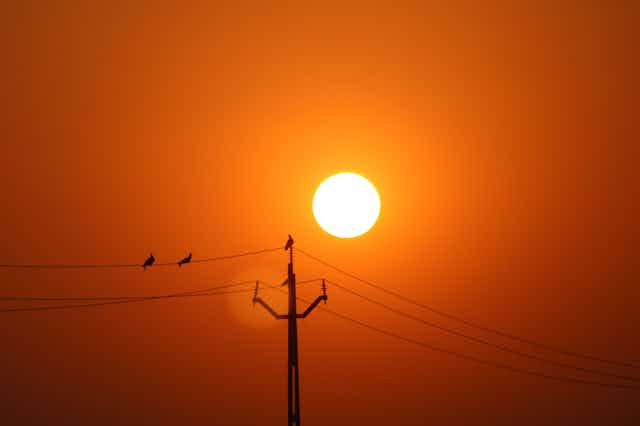Large parts of Australia are currently in the grip of a heatwave, and climate change means we’re in for more frequent and intense heat events into the future.
We know extreme heat can pose health risks, especially for vulnerable groups. But increasingly, research is highlighting a relationship between hot temperatures and violence.
Our team analysed close to one million reported incidents of domestic, non-domestic and sexual assaults over a 13 year period (2006-2018) in New South Wales. We examined trends related to season, temperature, and where the incidents occurred (inside or outside).
We found violence increased with warmer weather. But the effect of heat was greater on domestic violence than other types of violent crime. The reasons, and solutions, are complex.
Read more: Car accidents, drownings, violence: hotter temperatures will mean more deaths from injury
Hot weather, hot tempers
Rates of assault were higher in summer than in winter in most areas, except for a few places with snow tourism. Overall, domestic, non-domestic and sexual violence rose as temperatures increased from cool to warm.
On extreme heat days, non-domestic assaults outdoors declined, potentially because people move indoors seeking respite from the heat. However, domestic violence rates continued to increase with temperature, both inside and outside.
Sexual assaults both indoors and outdoors also increased in warm temperatures, but declined or plateaued in hot weather.
Why are violence and hot weather linked?
You’ve probably experienced the uncomfortable effects of hot weather, such as sweating, dehydration, lethargy and restless sleep. These effects can make people feel irritated, which may increase the likelihood of acting more aggressively.
Also, behavioural changes associated with hot weather may create more opportunities and motivation to act aggressively. For example, on warm and longer summer days we may be more likely to go out and socialise or drink more alcohol.
In extreme heat, we may retreat inside if we can, where there’s respite from the sun and potentially air conditioning. Given this, we might expect to see less of an association between violence and hot weather indoors. But our research found this wasn’t generally the case.
Domestic violence is more often experienced by women, at the hands of a family member or partner who they live with. During extreme heat, offenders and victims may not have practical ways to avoid the heat. The house may remain hot without access to air conditioning, or it may be too expensive to run.
Violence is also often said to occur “behind closed doors”, where there are fewer witnesses to intervene, and potentially more social stressors. As an example, COVID lockdowns were often associated with higher rates of intimate partner abuse.

One limitation of our study is that we used outdoor ambient air temperature to represent heat exposure, regardless of where the crime occurred. However, heat will vary significantly by location on a given day. For example, an indoor location like a bakery or factory could be hotter than outside at a shady park, and may remain hot regardless of the weather.
What about online?
Our team was interested to know whether temperature-related aggression can be seen outside of crime statistics, so we considered how anger is expressed on Twitter (now known as X).
In a previous study, we analysed emotions captured from more than 74 million tweets, looking for words or phrases that expressed rage or anger.
We found that generally the number of angry tweets (and in fact, tweets in general) decreased as temperatures moved from cool to warm. This may be partly because we get off our screens and enjoy the weather.
However, in very hot weather that trend plateaued or even reversed, suggesting angry tweets may rise in extreme heat. Similarly, studies have found online hate speech increases in extreme heat.

Reducing inequalities
Neither heat nor violence affect everyone equally. Both are influenced by social determinants of health.
Domestic violence is more likely to occur in disadvantaged areas. Likewise, lower socioeconomic populations tend to have higher heat exposure. This may be due to the urban heat island effect (where a city experiences warmer temperatures than surrounding rural areas), less access to air conditioning or private cars, or working outdoors.
While the drivers behind temperature-related violence are complex, there are things we can do. First, we need to address the big issues relating to domestic violence such as cultural norms, attitudes and legal provisions.
In heatwaves, we can provide inexpensive and accessible cool areas for those who need them. So-called “heat refuges” offer a safe space for people to linger, like at a library, swimming pool or community centre, and provide air conditioning, cold water and other facilities.
Increasing the amount of green space in cities could have a dual benefit. More urban greening is associated with lower urban heat island effect, and studies have also shown a link between more green space and less violent crime.
Read more: Extreme weather is landing more Australians in hospital – and heat is the biggest culprit
Our findings add to growing evidence that shows extreme weather events are associated with a range of poor health and social outcomes.
The effects of extreme weather in our communities demands more and stronger action on climate change.
The National Sexual Assault, Family and Domestic Violence Counselling Line – 1800 RESPECT (1800 737 732) – is available 24 hours a day, seven days a week for any Australian who has experienced, or is at risk of, family and domestic violence and/or sexual assault. You can also text the service on 0458 737 732.

